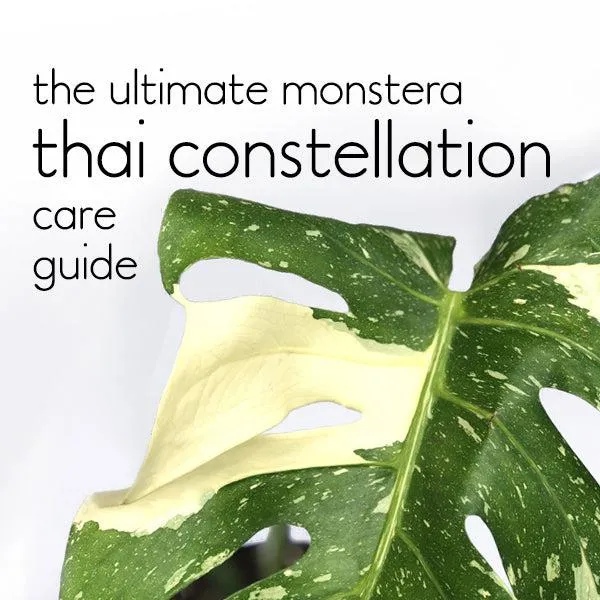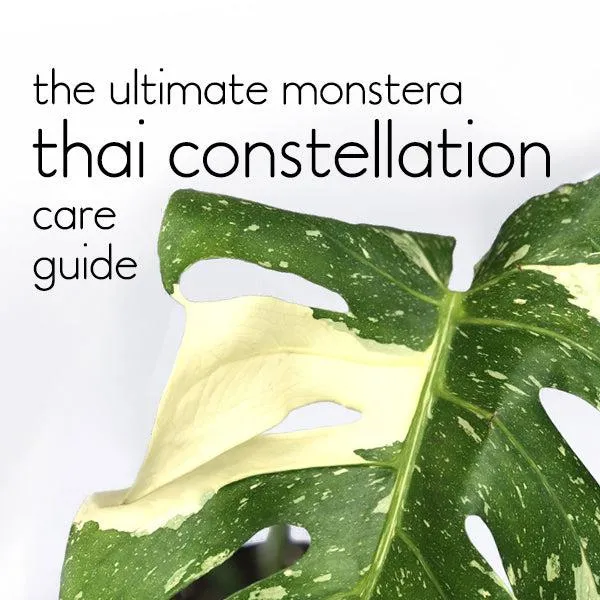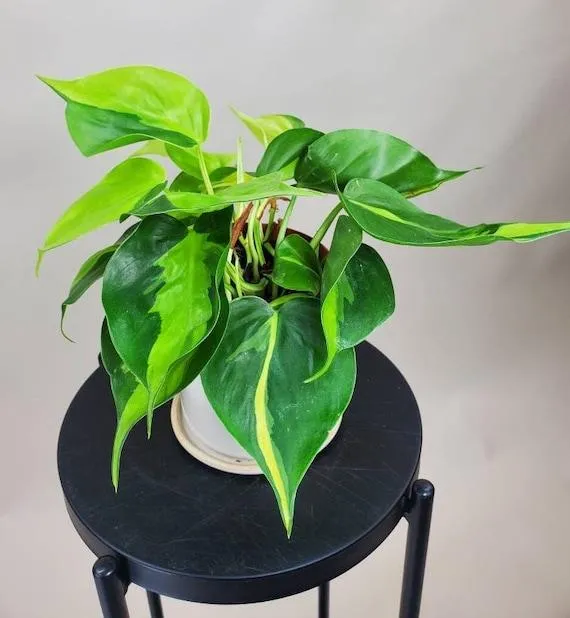Everything You Need to Know About the Beautiful Variegated Philodendron
The variegated philodendron is one of the most popular indoor foliage plants around. With its gorgeous leaves splashed with cream, yellow or pink coloration against a dark green backdrop, it’s easy to see why this plant is so widely loved. But beyond just aesthetics, the variegated philodendron can make a great addition to any home. In this article, I’ll address all the key things you might want to know about caring for and enjoying this beautiful plant.
An Overview of Variegated Philodendron Varieties
First, let’s break down the different types of variegated philodendrons you may encounter. The most commonly grown varieties include:
- Philodendron hederaceum ‘Brasil’ – Bright yellow variegation
- Philodendron hederaceum ‘White Knight’ – Predominantly white leaves with green edges
- Philodendron hederaceum ‘Yellow Ghost’ – Cream and yellow variegation
- Philodendron hederaceum ‘Red Emerald’ – Pinkish-red new growth
Within each variety, the exact pattern and intensity of variegation can vary plant to plant. Some may feature more cream versus yellow, for instance. But overall, these are the core types available.
Ideal Growing Conditions
To thrive, variegated philodendrons need conditions similar to their all-green cousins. They prefer:

- Bright, indirect light. Direct sun may scorch the leaves.
- Temperatures between 65-80°F.
- Moderate watering when the top inch of soil dries out.
- Regular fertilizer during the growing season.
- Humidity levels above 40%. Consider a pebble tray or humidifier.
From my experience, providing the right conditions is key to maintaining vibrant variegation over the long run. If leaves start to revert more green, it could be a sign the plant needs optimal care.
Propagating Variegated Philodendrons
If you want to multiply your plant collection, propagating variegated philodendrons from cuttings or dividing the root ball is totally doable. There are a couple potential hitches, though:
- Variegation may not be perfectly retained in new growth. The pattern could alter or diminish with each new plant.
- It’s best to take stem or node cuttings rather than leaf cuttings to ensure variegation carries over.
So while propagation works, it requires patience and you may end up with plants that don’t exactly match the parent. For reliable variegation, purchasing directly from a reputable nursery is usually the safest bet.
Dealing with Potential Pests and Issues
In general, variegated philodendrons are pretty hardy. But like any plant, they can potentially face problems too. Two common nasty critters to watch out for include:

- Spider mites – Tiny spider-like pests that can rapidly reproduce. Look for fine webbing.
- Mealybugs – Fluffy white insects that suck plant sap. Typical around leaf joints.
If spotted early, neem oil or insecticidal soap spray should do the trick. As for non-pest problems, brown or yellowed older leaves are typically nothing to worry about. But sudden leaf drop or wilt could point to root rot from overwatering.
Overall Care Tips and Tricks
A few final tips to keep your variegated philodendron looking its best:
- Prune away any non-variegated reversion shoots for aesthetics.
- Stake or wire larger plants to prevent floppiness.
- Repot only when roots start poking drainage holes for better growth.
- Rotate the plant weekly so all sides receive even light exposure.
- Enjoy this beauty indoors year-round with minimal maintenance needs.
With the proper care outlined above, your variegated philodendron can last for years as a truly standout element in any home or office space. Its pretty leaves never cease to brighten my day – hopefully this plant can do the same for you too! Let me know if you have any other questions.
Key Facts About Varigated Philodendron
| Variety | Leaf Color and Pattern | Growth Rate | Light Needs | Water Needs</ | Care Tips |
|---|---|---|---|---|---|
| Brasil | Dark green leaves with cream colored stripes and patches | Moderate | Bright indirect light | Allow soil to dry out between waterings | Prune as needed, propagate from leaf cuttings |
| Selloum | Dark green leaves with cream or yellow variegation around the edges | Slow | Bright indirect light | Water when top inch of soil is dry | Prune leggy growth, propagate from stem or leaf cuttings |
| Satin | Dark green leaves splattered and speckled with cream | Moderate | Bright indirect light | Allow top inch of soil to dry between waterings | Prune as needed, propagate from stem or leaf cuttings |
FAQ
-
What kind of plant is a variegated philodendron?
A variegated philodendron is a type of philodendron plant that has green leaves and yellow or white markings. Basically, it’s a philodendron that has more than one color on its leaves.

-
How much light does a variegated philodendron need?
These plants need indirect sunlight. Give them bright, filtered light rather than direct sun, which could kind of burn the leaves. Put them in a spot that gets morning sun but is shaded in the afternoon. You don’t want them to be in a super dark place though – there needs to be light but not too much of it if that makes sense.
-
How often should I water a variegated philodendron?
Water when the top inch or so of soil feels dry. Philodendrons are pretty tough and can go a while without water. But don’t let it get super parched either. Once a week should do the trick, or whenever you remember. You could also stick your finger in the soil to check before watering. These plants can handle less water than some other houseplants though.
-
How big do variegated philodendron plants get?
It really depends on the variety, but in general variegated philodendrons can reach 5-10 feet tall tall under the right conditions. I’ve seen some behemoth ones climbing all over a wall – they were stunning! Most stay smaller when grown as houseplants though, like 4-6 feet tall max. Give them something to climb and they’ll practically leap up to the ceiling. Watch out or it may take over your whole place!
-
Can variegated philodendrons be propagated from cuttings?
You bet – taking cuttings from a variegated philodendron is a fun way to make more plants. Simply cut off a stem with a few nodes, remove the bottom leaves, and place the stem in water. Within a few weeks you’ll see roots growing. Then pot it up! The new plant should have the same gorgeous variegated leaves. It’s amazing how easy these guys are to multiply.

-
Do variegated philodendrons need fertilizer?
Fertilizing during the growing season can help keep your plant lush and healthy. Nevertheless, overdoing it may cause problems. It’s best to use a diluted liquid houseplant fertilizer every couple months from spring to fall. On the other hand, cut back on fertilizer in winter when the plant isn’t growing as quickly. A little fertilizer goes a long way with these beauties.
-
What kind of pests can bother variegated philodendrons?
Some common pests to watch out for include spider mites, scale, and mealybugs. Spider mites create tiny webs on the undersides of leaves, while mealybugs look sort of like cotton balls. Scale appears as hard, crusty bumps. Check your plant regularly and isolate any with pests. Use neem oil or insecticidal soap to treat infested plants. It’s wise to keep an eye out and deal with pests sooner than later.
-
Is it hard to care for a variegated philodendron as a houseplant?
Not really – variegated philodendrons are pretty low maintenance. As long as they get the right lighting and you water and occasionally feed them, they should thrive indoors. They’re pretty tough plants that can handle less-than-perfect care. And their gorgeous variegated leaves are a real stunner in any home. These beauties are a great option for anyone looking for an easy-to-grow houseplant.
